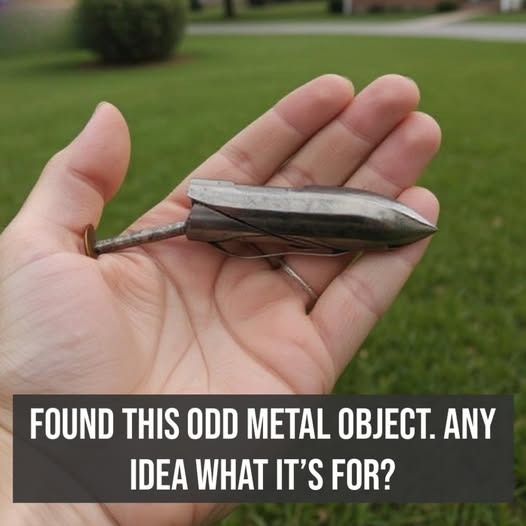While cleaning out the attic of my grandparents’ old house, I came across a small metal object that immediately caught my eye. It was smooth and sleek, shaped somewhat like a tiny rocket or bullet, and surprisingly heavy for its size. Its pointed tip and hollow interior hinted that it wasn’t just a decorative piece but something with a purpose.
urious about what it might be, I examined it closely, wondering if it was an old kitchen tool, a piece of woodworking equipment, or a component from a forgotten machine. Unsure, I photographed it and shared the picture online, hoping for answers.
The responses varied widely—some thought it was related to fishing gear, others believed it to be a machine part, but then a sewing enthusiast identified it immediately as a shuttle from a pedal-powered sewing machine, also called a boat shuttle or bullet shuttle.
At first, I was skeptical, but on closer inspection, everything clicked into place. These shuttles were used in sewing machines from the late 19th century to the mid-20th century, before the round bobbin became standard. The pointed shape, designed to hold a bobbin inside, allowed the shuttle to slide back and forth rapidly, intertwining the lower and upper threads to make strong, precise stitches.
That shuttle was a marvel of its time, revolutionizing sewing by making it faster and more reliable than hand stitching. It connected me to the golden age of sewing, when families used foot-powered treadle machines like those made by Singer and Minnesota. These machines were more than just tools—they were family treasures that helped craft clothing, repair garments, and create quilts that told stories.
Holding that tiny metal shuttle, I felt a deep connection to my ancestors who may have used one just like it. It reminded me that history isn’t only in museums or books but can be found in dusty corners of our homes, waiting to be rediscovered.
Unlike modern parts, each shuttle was carefully crafted and built to last. Many still work perfectly after a century, prized by collectors and restorers alike.
This little object became much more than metal; it became a symbol of craftsmanship, tradition, and family heritage—showing how even the smallest things can tell big stories.


